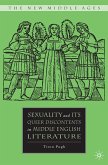Dieser Download kann aus rechtlichen Gründen nur mit Rechnungsadresse in A, B, BG, CY, CZ, D, DK, EW, E, FIN, F, GR, HR, H, IRL, I, LT, L, LR, M, NL, PL, P, R, S, SLO, SK ausgeliefert werden.
"Salmesvuori succeeds in showing how this remarkable woman from the northern fringe of Europe was able to establish a personal authority that made princes, priests, and popes listen to her. After reading this book, few will be inclined anymore to say that Birgitta was guided by her father confessors. It was clearly the other way around." - Stephan Borgehammar, Professor of Practical Theology, Lund University, Sweden
"Salmesvuori offers fresh insights into how Birgitta established her reputation as a living saint in mid-fourteenth century Sweden. Carefully attending to historical chronology, Salmesvuori provides new interpretations of Birgitta's early revelations in light of key theories about the public performance of religious power. She cogently demonstrates that Birgitta exercised spiritual authority through repeated negotiations with her audience and attracted followers even earlier than scholars usually recognize. This study is a valuable contribution to our understanding of gender, power, and sanctity in the later Middle Ages." - Claire L. Sahlin, Professor of Women's Studies, Texas Woman's University, USA









